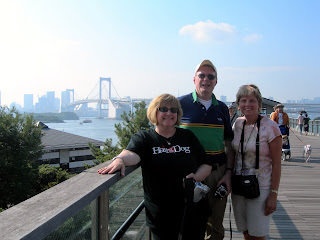

With great memories we reflect on this long trek half way across the world. We enjoyed each other's company and stories, and enjoyed meeting new friends. This trip was a mystical, religious, and historical adventure learning about the beautiful Japanese culture and the Buddhist temples and Shinto Shrines. It was a culinary delight to sample the many tastes of Japan. We are left with lasting thoughts on how culturally diverse our world is, and we are one step further to becoming globally aware. I leave you with a few of my favorite pictures of Japan - the Kamakura Buddha and the beautiful Fuji hydrangea. History and Beauty all rolled into one! That's the Land of The Rising Sun!













































